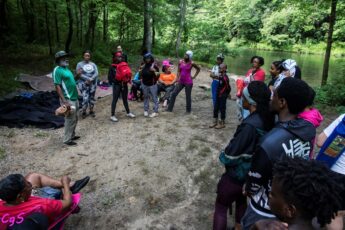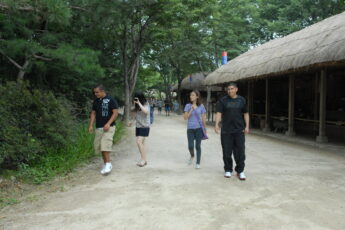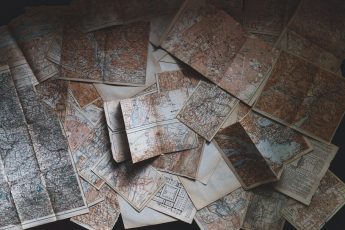Orienteering is a sport that blends running or walking with cross-country navigation using a map and a compass. It combines confidence-building exercises and builds physical fitness. To learn more about the sport, you can read this article. Then, get your own map or compass, and start training! Orienteering is a great way to get outside, build confidence, and have fun!
Orienteering is a navigational sport
Orienteering was invented in the late 1800s as a military competition, and has since spread to other countries. Orienteering has many forms, and you can learn the basics of this sport by taking a course put on by a local orienteering club. Many orienteering clubs also offer training, articles, and other resources for beginners. To learn how to navigate, check out the links below!

Orienteering requires a high degree of mental and physical awareness. Competitors must plan their movements on the course in advance, and route planning can be a significant part of the sport. Orienteering events are timed, and the fastest time wins. Pace setting is an important part of orienteering, and competitors must learn what pace is necessary to complete a course efficiently.
In orienteering, you use a compass and map to navigate your course, just like on a real-world scavenger hunt. It’s similar to a game of chess or a treasure hunt in the woods, but requires a great deal of physical effort. Unlike other sports, orienteering challenges you to develop strategies and navigate efficiently from site to site.
Orienteering maps are specially designed to facilitate the course and the navigation. They are generally topographic maps and are more detailed than general purpose maps. The maps’ scales are generally 1:7,500, 1:15,000 or 1:10,000. The symbols are standardized by the International Orienteering Federation (IOF). Control points are usually marked by white and orange “flags” in the map to indicate their locations.
Orienteering is a fun and challenging sport that uses map skills and a compass to help participants navigate a variety of terrain. Orienteering is a great activity for all ages and fitness levels. You will be challenged physically, mentally, and intellectually as you work through a course to visit various points on a map. The routes are based on both on and off-trail terrain. During an orienteering course, you must visit each of the control points on a map, and then insert your “finger stick” into a station to confirm your attendance. After you’ve completed all of the checkpoints, you’ll reach the finish line!
The most basic aspects of the sport include the course. A master map is typically displayed near the start of the course, and experienced orienteers copy the course while the clock is running. You can also follow the course by using a compasses or a GPS, or simply punch control cards with your e-punch. If you’re new to the sport, you’ll want to familiarize yourself with the basic elements of orienteering before joining an event.
It combines running or walking with cross country navigation
Orienteering is a sport that combines running or walking with cross-country navigation. It is a timed competition in which competitors use specially made maps to find their way through a variety of terrains. Using a compass and map to guide them, competitors visit a series of control points and prove their visits with an electronic finger stick or paper control card. Afterward, competitors must return to the start/finish area to download their results and discuss their race with their fellow competitors.
Orienteering is a fun way to develop physical fitness and protect children from dangers during after-school activities. Among the benefits of orienteering are increased concentration, awareness, and fun. Unlike other sports, orienteering is great for children because it can help them build their self-esteem, improve their confidence, and prevent them from joining risky activities.
While learning to navigate the outdoors can be daunting, the benefits of orienteering are many. First, it develops self-esteem, as competitors learn to rely on their own abilities. The courage to face unfamiliar territory builds self-confidence. Orienteering can also help children improve their social skills and improve their mental health. Furthermore, orienteering encourages a love of the outdoors. Orienteering is an extremely popular sport in the U.S. and Canada.
Orienteering is a great way to build muscle and endurance. The vast majority of orienteering areas do not have flat terrain. Instead, they are covered with undulations that provide an environment for athletes and non-athletes alike. The sport of orienteering is for people of all ages and physical fitness levels. It is not a costly sport, and the equipment required is relatively inexpensive.
It uses a map and a compass
Orienteering requires students to use a map and a compass to navigate through a course. Depending on the age group, the activities can be scaled for younger students or more advanced students. Elementary school students would complete a simplified course, while high school students can compete on more challenging courses. As a teacher, it’s important to understand what the varying levels of experience require.
The compass is a hand-held instrument that contains a magnetic needle and a liquid-filled capsule. The compass will have bearing markings around the bezel that indicate cardinal directions, smaller interval bearings, and orienting lines. Orienteering arrows are typically made of steel or wood. Using a compass requires a keen eye for distances, and a compass with a baseplate and a lanyard can be a great help.
Orienteering maps are usually composed of a triangle or a double circle, along with connecting lines. The triangle and double circle are the start and finish, while the circles between are checkpoints. Throughout the course, numbered orange and white flags are placed in the terrain to indicate their correct locations. Orienteers must punch the corresponding checkpoints in order to register their route.
Orienteering also makes use of a compass, which can help set the map. Using a compass can also help you check the direction of the path on the ground after taking a bearing from the map. Advanced techniques in orienteering can include taking bearings from distant landmarks and re-sectioning. It’s a fun and rewarding activity.
Orienteering is a sport that requires a basic understanding of maps. A map is essential to orienteering because it helps you determine landmarks and orient yourself. A compass and map are also used to plot the route. Once you have these two tools, you’ll be ready to compete in orienteering events. And don’t be intimidated by the fact that it may seem difficult or even impossible.
Orienting a map with a compass requires you to align the needle of the compass with the direction of the map. To use a compass correctly, you should align the direction lines of the compass needle with the north and south directions on the map. Once you’ve made sure that the compass needle is aligned with the two, you’re ready to navigate.
It builds confidence
The act of orienteering develops self-confidence and trust in yourself. It requires quick response, analysis, and comprehension skills. Ultimately, it also develops self-awareness and encourages reflection. Whether you’re training to become a cadet or a recreational orienteer, orienteering will boost your confidence. A great activity for residential settings, orienteering can also be used for school day trips.
Practice orienteering on a map. By getting a map, aiming off, and navigating to attack points, you’ll gain confidence and master new skills. Besides, it’s a great way to get outside and experience a new environment. You’ll be amazed at how quickly your confidence grows. Try to find an orienteering course as close as possible. Practice on a short course first. Then, move onto the challenging one.
The more accurate your attack point, the smaller the unknown distance of the course. By reducing the variance in accessing the next point, orienteers can decrease the total time spent on the course. Also, practice makes perfect, so make sure to practice regularly. Aim to get a high score on the take home exam and work on your skills during the course. If you’re serious about getting to the finish line, orienteering is for you!
During an orienteering event, students will learn the concept of running to a flag. It helps to increase their spatial awareness, as you’ll notice the position of objects and obstacles on the map. To practice spatial awareness, students can draw a simple rectangle map of the gym. Identifying the location of each piece of equipment is essential to locating it. Lastly, students will need to carry a whistle to signal their teammates when they’re in danger.
Orienteering is an excellent exercise to increase one’s self-esteem. The mental agility and endurance necessary for orienteering builds confidence in oneself. The mental fortitude required to endure the challenges of unfamiliar forests and terrain is also important in orienteering. This sport helps participants develop communication skills and enhance their focus on their surroundings. As a result, orienteering improves confidence in both young and old alike.
aeorienteering.com is reader-supported. When you buy through links on our site, we may earn an affiliate commission.



